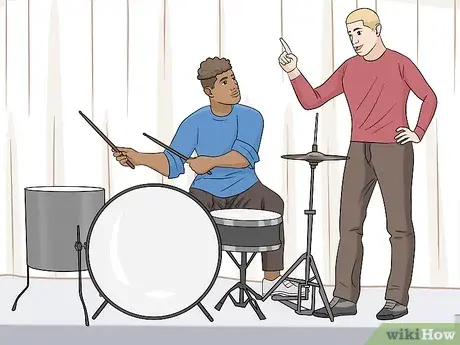
How to become a good drummer?
Who of us does not dream of becoming a percussion master, being as fast as Gary Nowak or having technical skills like Mike Clark or at least being rich like Ringo Starr. It can be different with gaining fame and fortune, but thanks to regularity and persistence, we can become good musicians, having our technique and style. And what distinguishes a good musician from an average one? It is not only an excellent technique and the ability to move in different styles, but also a certain originality that musicians often lack.
Imitating and watching others, especially the best ones, is highly recommended. We should follow the example of the best, try to imitate them, but over time we should also start developing our own style. However, to achieve this, we should follow certain rules and regulations that we impose on ourselves. Success does not come easily and, as the saying often says, it is painful, so organization itself is important.
It’s good for us to organize our exercises and make a plan of action. Each of our meetings with the instrument should start with a warm-up, preferably with some favorite technique on the snare drum, which we gradually start to break down into individual elements of the set. Remember that each snare drum exercise should be mastered both from the right and left hand. The most popular snare drills are stick control or paradiddle and roll rudiments. All exercises should be performed with the use of a metronome. Let’s make friends with this device from the very beginning, because it should accompany us practically during all exercises, at least during the first years of learning.
It is the drummer’s responsibility to keep the rhythm and pace. A good drummer includes the one who can cope with it and unfortunately it often happens that keeping the pace is very different. Especially young drummers have a tendency to wind up the pace and speed up, which is especially noticeable during the so-called go. A metronome is an expense from a dozen to several dozen zlotys, and even such a metronome downloaded to the phone or computer is enough. Remember to be able to perform a given exercise both at a fast and very slow pace, so we practice it at different paces. Let’s try to diversify them not only by adding ornaments, but for example: swapping the hand with the leg, i.e. what is to be played, for example, let the right hand play the right foot, and at the same time let the right hand play, for example, quarter notes for a ride.
There are really thousands of combinations, but remember to approach each exercise with great care. If it does not work out for us, do not put it aside, proceeding to the next exercise, but try to do it at a slower pace. Another important element of our plan should be regularity. It is better to spend 30 minutes with the instrument every day practicing with your head than run a 6-hour marathon once a week. Regular daily exercise is much more effective and is the key to success. Also remember that you can practice even when you don’t even have the instrument with you. For example: while watching TV you can take the sticks in your hand and practice paradiddle diddle (PLPP LPLL) on your knees or on a calendar. Less contact with the drums and use every spare moment to perfect your technique.
Listening to other drummers is very helpful for your development. Of course, we are talking about the best ones that are worth taking an example. Play along with them, and then, when you are confident in the track, organize a backing track without a drum track. Helpful in this is, for example, a key with a sequencer, where we will fire the midi background and mute the drums track.
A great way to verify your progress as well as to spot some shortcomings is to record yourself during the exercise and then listen to and analyze the recorded material. In real time, during the exercise, we are not able to catch all our mistakes, but later listening to it. Remember that knowledge is the basis, so whenever you have the opportunity, use various workshops and meetings with drummers. You can learn and learn something useful from almost every active drummer, but you have to do the main work yourself.
Comments
Note – recording your actions is great advice for all musicians, not only 🙂 Hawk!
Rockstar
Everything written must be followed. I neglected a few elements from the beginning and now I have to backtrack a lot in order to move on. It is not worth the rush. The instrument does not forgive
Beginner
Truth and nothing but truth. My confirmation … Knee pad and clubs always in the backpack. I play everywhere and whenever I have time. Society looks strange, but the goal is more important. Practice, control and the effects appear 100%. Rampampam.
China36





